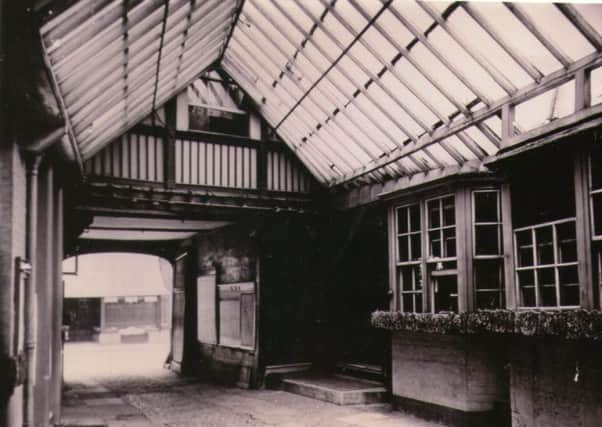Look back with Little: Is it time to bring back the arcade to Banbury?


Although the Banbury Co-operative Industrial Society began with the sale of groceries and provisions in Bridge Street during 1866, the key to early 20th century expansion was the demolition of the Coachsmiths Arms on the corner of Broad Street with Fish Street (now George Street) in 1908.
It was here much rejoicing greeted the opening of a new and bigger Co-op building and the occasion was marked by band music from the flat roof.
Advertisement
Hide AdAdvertisement
Hide AdEight years later the Broad Street scene was dominated by society-owned buildings selling all essential needs including meat, which owed much to a slaughter house off Hightown Road. The frontages also announced the existence of drapery and furnishing premises.
The next stage in the evolution of Co-opville came in March 1934 when a massive crowd witnessed the opening of a building that was the first of its kind in Banbury. WM Lickorish, general manager, revealed an arcade, the inclusion of which ushered in a new phase in the history of the Banbury Co-operative movement.
In his opening speech, Mr Lickorish made the significant remark that ‘a long-cherished dream has at last been realised’. Here was an arcade that could be envisaged as an indoor street offering the prospect of a leisurely promenade.
Central to the arcade was a glass dome that offered a pleasing effect under artificial lighting conditions. Departments at this level included outfitting, footwear, barbers for men whilst female interests were served by a drapery, ladies’ footwear and a hairdressing salon.
Advertisement
Hide AdAdvertisement
Hide AdLittle has been written about arcades yet they are especially interesting features of many historic market towns.
However in 1985 Margaret MacKeith took the plunge and compiled a Gazetteer of British Shopping Arcades 1817-1939, strange to say it did not include the Broad Street Co-op initiative. Apart from the fact this arcade was not an entity in itself, it is necessary to bear in mind a statement in Margaret’s book that there are ‘many fine examples of Georgian and Victorian shopping arcades which are a delight to experience’.
Against this it has been pointed out that Banbury was a mature market town in Victorian times and be expected to reveal many different ways of accommodating retail activity and of linking town centre streets of contrasting importance.
Prior to 1934 the closest Banbury came to the more traditional arcade was in 1929 when there was a scheme to modify Church Lane by enclosing it and exploiting its direct alignment from the High Street (Red Lion Street) to Parsons Street.
Advertisement
Hide AdAdvertisement
Hide AdElsewhere in the town centre it seems likely arcade development was inhibited by the medieval creation of burgage plots (land rented at a yearly rate). The passage way known as Pepper Alley might have been adaptable but counter arguments must include the domination of the spice trade rather than more varied activities.
Another passageway adjoined the Woolworths store when it opened in 1931. This linked the High Street and George Street, however during Victoria’s reign it was very much associated with corn dealing when the Red Lion occupied the site.
A further possibility would have been Tink-a-Tank but this had a number of disadvantages – the pebbled surface and the fact only one end would have a connection with an established town centre shopping area.
The age of the yard is now over and maybe now would be the time to consider the creation of one or more covered arcades, both as source of retail experience and as a means of visitor attraction.
Encouragement to consider this can be drawn from Margaret MacKeith’s observation that ‘the idea of the elegant glass-covered corridor lined with exciting shops is irresistible’.